#prehistoric Britain
Text
A study has found DNA evidence of the plague in 4,000-year-old skeletal remains, the oldest evidence of the plague in Britain to date.
The plague – known during an infamous 14th-century outbreak as the “Black Death” – is one of the deadliest diseases in human history. It is caused by the bacterium Yersinia pestis and infects many other animal species such as fleas, whose bites are one of the main routes of transmission to humans.
All three cases were found to lack two key genes – yapC and ymt – which are found in later strains of the plague. These genes play an important role in infection transmission via fleas, making it unlikely that this plague strain was spread via this vector.
0 notes
Text

The summer solstice has dawned over Stonehenge for millennia.
#Stonehenge#Wiltshire#Salisbury Plain#English countryside#dawn#prehistoric#stone circle#summer solstice#sunrise#ancient Britain#Druidism#paganism#mystical#England
77 notes
·
View notes
Text

The early sauropodomorph Camelotia traveling on a quest
This was a study on a shot from The Green Knight, saw that movie last week finally and absolutely loved it
So what do I do? Slap a dinosaur in there, as one does
#my art#paleoart#camelotia#sauropodomorph#saurischia#dinosaur#extinct#animal#nature#sciart#triassic#jurassic#britain#mesozoic#prehistoric#the green knight#study#digital art
50 notes
·
View notes
Text

Thalassiodracon
Thalassiodracon — вимерлий рід плезіозаврів з родини Pliosauridae, що існував у пізньому тріасі – ранній юрі і відомий виключно з Нижнього Ліасу Англії. Типовий і єдиний вид — Thalassiodracon (Plesiosaurus) hawkinsi (Owen, 1838).
Повний текст на сайті "Вимерлий світ":
https://extinctworld.in.ua/thalassiodracon/
#thalassiodracon#england#great britain#late triassic#triassic#triassic period#plesiosaurus#jurassic#pliosauridae#plesiosaur#paleontology#paleoart#prehistoric#animals#extinct#fossils#ua#illustration#sciart#article#palaeoblr#палеоарт#палеонтологія#ukraine#ukrainian#digital art#daily art#україна#мова#арт
68 notes
·
View notes
Text

Stonehenge, 2 May 1816 by Francis Etheridge
#francis etheridge#art#stonehenge#wiltshire#england#salisbury plain#megalithic#megalith#prehistoric#neolithic#structure#monument#bronze age#stones#british isles#britain#europe#european#clouds
125 notes
·
View notes
Text
doggerland haunts me. all those cultures all those lives all those nomads and settlers those fishing villages and hunting grounds all those pastures and hills and herds of deer and hyenas and lions all those religions and families and generations upon generations washed away beneath the tide in less than a year. some say a day. a wave taller than anything you or i have ever seen, a merciless skyscraper of saltwater, sparing no structure, leaving nothing behind. an individual death is a blip in the long run — but to have an entire landmass erased from history, forgotten by time, washed ashore in fragments and accidents — a colossal shipwreck of a continent drowned beneath the frigid waters of the north sea… tragedy on an unfathomable scale. all the myths we’ll never hear. the artefacts we’ll never unearth. the stories of a people lost
#i just can’t get over it. one day there’s a thriving community of hunter-gatherers on the islands#the next — a deluge of pre-biblical proportions and then… nothing but sea#doggerland#history#archaeology#prehistoric#geography#jamie.txt#wyrd britain
10 notes
·
View notes
Text
The oldest piece of artwork ever found in Britain dates back to the end of the Ice Age. Known as the Cresswell horsehead, it’s a fascinating look into art’s evolution.
20 notes
·
View notes
Text
the fact that a 1100 year old political maneouvre combined with a shallow understanding of genealogy is such a huge part of modern wh1te n4ti0n4list identity politics is both hilarious and frustrating to someone who yknow studied the era
#hey guys Cambridge is right there IS no such thing as Anglo Saxons !!#no one in acedemia has used the term without a huge amount of qualifiers for 30 years at least#sorry to tell you but the English identity was made up to justify reconquering the Danelaw#i REALLY think the commonplace genetic testing and the fundamental misunderstanding of genetic origin it created isnt helping either#sorry to tell you again but Britain has always been a mixing pot :))#modern genetic study of Britain is something i read about just anyway because the origin of culture and language here is interesting to me#and its deep and rich and full of prehistoric influx from across europe#so yknow#anyway today im mad about this and right wing people who piss themselves about not being Anglo Saxon are pathetic#rory's ramblings
11 notes
·
View notes
Text
Gathered in an exhibition room at Stonehenge, around 80 objects made in Japan during the Jōmon period, roughly the same time the great stone circle on Salisbury Plain was built, highlight some beguiling parallels between two cultures separated by thousands of miles.
The exhibition, Circles of Stone: Stonehenge and Prehistoric Japan, reveals that prehistoric people in southern Britain and in Japan took great trouble to build stone circles, appear to have marked and celebrated the passage of the sun and felt moved to come together for festivals or rituals.
“Of course they couldn’t possibly have any idea what each other was doing,” said Martin Allfrey, senior curator for English Heritage. “But it is tantalising to look at what these extraordinary objects from Japan tell us about the similarities between these communities who were perhaps ideologically closer than one might imagine. Exploring what is happening elsewhere in the prehistoric world is key to understanding the significance of Stonehenge.”
At about the time Stonehenge’s builders were creating the monument, their Japanese counterparts were coming together to make sites such as the Ōyu stone circles in northern Japan. These do not feature the sort of hulking standing stones that Stonehenge is famous for but rather large circles made of thousands of river pebbles. Like Stonehenge, they appear to be aligned to mark solstices.
Star of the show at Stonehenge is the Jōmon cooking pot, which Simon Kaner, executive director of the Sainsbury Institute for the Study of Japanese Arts and Cultures, explained would have been placed in the fire of a Jōmon dwelling near the Shinano River. He pointed out the black marks that show it was used for making, perhaps, a fish stew. “Imagine sitting around the fireplace as a meal bubbled away in this. It must have cast the most extraordinary shadows,” he said. This is the first time the pot has gone on display outside Japan.
Finds made at the Japanese stone circles suggest people came together for feasts and venerated their ancestors, just like the people who constructed Stonehenge. The scale of their creations meant that both the ancient Britons and Japanese people must have been able to bring together large numbers of people to co-operate on ambitious, important projects.
Geography may have something to do with the parallels. The UK and Japan flank the Eurasian landmass at roughly the same latitude, meaning they have similar climates and natural resources, which both peoples exploited and adapted.
#love jomon pottery#that header image is causing me to short circuit#they took the pot on a fieldtrip to Stonehenge!!#prehistoric japan#neolithic Britain#ancient cultures#ancient history#exhibitions
13 notes
·
View notes
Text


✨️pics are not mine✨️
Stonehenge is a neolithic monument made from sarsen stone (outer ring) and a bluestone (inside ring). Archaeologists believe that it was constructed from around 3000 BC to 2000 BC. It was produced by a culture that left no written records. That's why we don't really know, what was the function of it. Stonehenge may have been built as a symbol of "peace and unity" of Britain's Neolithic people.
🤍 place: Salisbury Plain in Wiltshire, England
🤍 time period: Neolith/Bronze Age
🤍 culture: Bell Beaker Culture/Wessex Culture
#architecture#history#stonehenge#professor neolith#neolithic#bronze age#megalithic#archaeology#archeolgst#archaeologist#art#dark acadamia aesthetic#dark academia#art history#prehistoric#prehistoire#monument#england#britain
6 notes
·
View notes
Text
Cultural Patrimony and the War in Ukraine
I have been looking into the repatriation of artworks like the Parthenon marbles, and Benin Bronzes. It has been eye opening to see how many artifacts have been stolen or looted from their countries of origin, especially by Britain and the U.S.

Earlier this month when I began writing this post it was going to be focused on a marauder-style looting of Scythian Gold from art museums in Melitopol and Mariupol, Ukraine by Russian forces in April of this year. But, just two weeks ago at the beginning of November there was yet another tremendous raiding at the Kherson Art Museum in Southern Ukraine. The Russians destroyed many businesses, churches, homes, and cultural sites in the raid where much of the loot was found as Museum staff and community members tried to preserve it. As aforementioned, this is not the first strike Soviet forces have made on Ukrainian Art and Cultural institutions, those who understood the cultural significance of the items tried to save them. The museum was home to hundreds of paintings dating back to the 17th Century. Shortly after the raid, Soviets withdrew from the Southern Ukrainian city of Kherson in retreat with vans full of thousands of priceless artifacts.


These stolen paintings and artifacts are a part of a larger, darker tactic to scrub Ukrainians, Belarusians, Poles, and other Eastern Europeans of their cultural heritage and independence. Art is only the tip of the iceberg unfortunately, this month's raids included the vandalism and removal of 200 year old holy remains from their resting place in one of the 250+ Orthodox and Christian churches destroyed since the war began. Not to mention the homes, businesses, technology, national monuments and written history that have been lost. This is Ethnic cleansing and it is a war crime, these pieces must be returned to Ukraine.

The Scythian gold is one of the more pressing issues of this Museum theft, though. We're talking about approximately 198 solid gold artifacts, jewelry, ornaments, weapons, armor, and sculptures dating back over 2300 years, stolen, and not because they were just stumbled upon either. Similarly to how the staff at the Kherson Museum tried to hide and preserve the artwork, the staff at the Melitopol Museum tried even harder. In a New York Times interview in April, Museum Director Leila Ibrahimova describes hiding the Scythian Gold in cardboard boxes in a cellar or basement at the first signs of Russian Militarization in Melitopol back in February. About a month later, Ibrahimova recounted being kidnapped from her home with a black bag on her head for hours of intense questioning by Russian forces. She did not give in and was released, promptly fleeing Melitopol for somewhere not under Russian control. It was another month after that when a different museum employee was put at gunpoint for the Scythian Gold, she did not lead them but they found the boxes anyway.
The next day, in Kyiv, the Mayor of Melitopol gave an enraged press announcement that Ukraine's Scythian gold was gone with the Russians and no one had its whereabouts any longer.

Scythian Gold describes a type of gold sculpture or artifact from the 7-3 Century BCE, made by Scythian or nomadic people in a geographic "band" across the Pontic-Caspian Steppe from around Romania, west through Siberia. This is one of the most sought-after collections of artwork by museums throughout history, known for its rich origins and cultural backgrounds. Scythian gold is also said to be the purest gold there is, and it has disambiguations in the context of alchemy, mythology, and religion as well. It has been reported by multiple sources, although not confirmed, that select pieces of Scythian gold that were stolen from the Melitopol Museum have hit the stolen art market online and underground for bidding. All I can say is it's a shame and I am feeling very sorry for those living in Ukraine and the generations of war, violence, natural disasters, and ethnic cleansing they have faced.
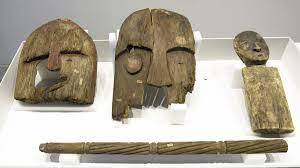
In that initial research into stolen ancient art I mentioned, I noticed that most of the articles and hot-button issues coming up were focusing on Western European countries (UK, Spain, France), stealing from prehistoric cultures around the world. It's interesting to me as a student who had weekly field trips to LOCAL (Northeastern U.S. ) art museums and saw plenty of ancient "tribal" art and cultural and religious artifacts from across the globe, that the U.S. apparently acquired all of it ethically. I digress, I just thought it was worth mentioning that a suspiciously small amount of info on stolen art in the Americas was available.
#art#art history#stolen art#stolen artifacts#ancient art#archeology#prehistoric#prehistoric art#ukraine#russia#ukraine war#looting#south ukraine#britain#british museum#fascisim#ethnic cleansing#cultural erasure#Scythian gold#middle east art#kherson#kherson retreat#kherson museum#melitopol
2 notes
·
View notes
Text
The Origin of Halloween from Samhain to Trick-or-Treat
The Origin of Halloween from Samhain to Trick-or-Treat
https://www.historicmysteries.com/origin-of-halloween/

View On WordPress
#Ancient Britain#Archaeology#Bonfires#Celts#Fire#Gaelic#Goddess#Gods#Halloween#history#holidays#Ireland#Neolithic#Offerings#Prehistoric#Religion#Religious Artifacts#Religious Rituals#Samhain#Spirituality#The Mound of the Hostages
2 notes
·
View notes
Text
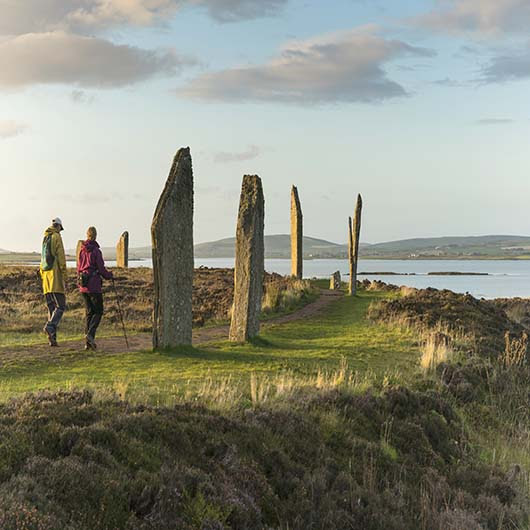
The Ring of Brodgar on Orkney predates Christianity by millennia, so the term pagan is used quite loosely. It was all our ancestors knew.
#Ring of Brodgar#Orkney#Scottish islands#standing stones#pagan monuments#stone circle#prehistoric#ancient britain#UNESCO World Heritage#mystical#remote#Scotland#UK
57 notes
·
View notes
Text
WOW.
Scientists found an amazingly well-preserved village from 3,000 years ago
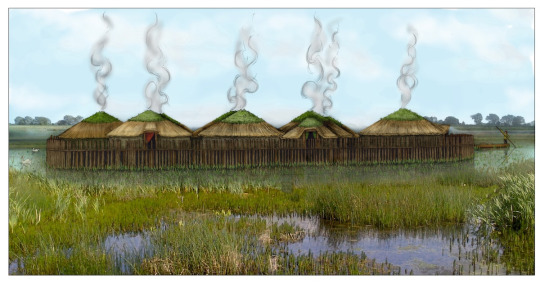

Text below, in case article access dries up:
LONDON — A half-eaten bowl of porridge complete with wooden spoon, communal rubbish bins, and a decorative necklace made with amber and glass beads are just a handful of the extraordinarily well-preserved remnants of a late Bronze Age hamlet unearthed in eastern England that’s been dubbed “Britain’s Pompeii” and a “time capsule” into village life almost 3,000 years ago.
The findings from the site, excavated in 2015 to 2016, are now the subject of two reports, complete with previously unseen photos, published this week by University of Cambridge archaeologists, who said they cast light onto the “cosy domesticity” of ancient settlement life.
“It might be the best prehistoric settlement that we’ve found in Britain,” Mark Knight, the excavation director and a co-author of the reports, said in an interviewThursday. “We took the roofs off and inside was pretty much the contents,” he said. “It’s so comprehensive and so coherent.”
The reason for the rare preservation: disaster.
The settlement, thought to have originally consisted of several large roundhouses made of wood and constructed on stilts above a slow-moving river, was engulfed by a fire less than a year after being built.
During the blaze, the buildings and much of their contents collapsed into a muddy river below that “cushioned the scorched remains where they fell,” the university said of the findings. This combination of charring from the fire and waterlogging led to “exceptional preservation,” the researchers found.
“Because of the nature of the settlement, that it was burned down and its abandonment unplanned, everything was captured,” Knight added.
“As we excavated it, there was that feeling that we were picking over someone else’s tragedy,” he said of the eerie site in the swampy fenland of East Anglia. “I don’t think we could smell the fire but the amount of ash around us — it felt close.”
Researchers said they eventually unearthed four large wooden roundhouses and an entranceway structure, but the original settlement was probably “twice as big.”
The site at Must Farm dates to about 850 B.C., eight centuries before Romans came to Britain. Archaeologists have been shocked at “just how clear the picture is” of late Bronze Age life based on the level of detail uncovered, Knight said.
The findings also showed that the communities lived “a way of life that was more sophisticated than we could have imagined,” Duncan Wilson, head of Historic England, the public body responsible for preserving England’s historic environment, said in a statement.
The findings unearthed include a stack of spears, possibly for hunting or defense; a decorative necklace “with beads from as far away as Denmark and Iran”; clothes of fine flax linen; and a female adult skull rendered smooth, “perhaps a memento of a lost loved one,” the research found.
The inhabitants’ diet was also rich and varied, including boar, pike and bream, along with wheat and barley.
A pottery bowl with the finger marks of its maker in the clay was also unearthed, researchers said, still containing its final meal — “a wheat-grain porridge mixed with animal fats” — with a wooden spatula resting inside the bowl.
“It appears the occupants saved their meat juices to use as toppings for porridge,” project archaeologist Chris Wakefield said in the university’s news release. “Chemical analyses of the bowls and jars showed traces of honey along with ruminant meats such as deer, suggesting these ingredients were combined to create a form of prehistoric honey-glazed venison,” he added.
Skulls of dogs — probably kept as pets and to help with hunting — were also uncovered, and the dogs’ fossilized feces showed they fed on scraps from their owners’ meals, the research found.
The buildings, some connected by walkways, may have had up to 60 people living there all together, Knight said, along with animals.
Although no intact sets of human remains were found at the site, indicating that the inhabitants probably fled the fire safely, several sheep bones were found burned indoors. “Skeletal remains showed the lambs were three to six months old, suggesting the settlement was destroyed sometime in late summer or early autumn,” according to the university’s news release.
Ceramic and wooden vessels including tiny cups, bowls and large storage jars were also found. Some pots were even designed to nest, stacked inside one another, Knight said — evidence of an interest in aesthetics as well as practicality.
A lot of similar items were found replicated in each home, Knight added, painting the picture of completely independent homesteads for each family unit rather than distinct buildings for shared tasks — much like we live today.
Household inventories often included metal tools, loom weights, sickles for crop harvesting, axes and even handheld razors for cutting hair.
The roundhouses — one of which had almost 50 square meters (nearly 540 square feet) of floor space — had hearths and insulated straw and clay roofs. Some featured activity zones for cooking, sleeping and working akin to modern-day rooms.
The Must Farm settlement has produced the largest collection of everyday Bronze Age artifacts ever discovered in the United Kingdom, according to Historic England, which partly funded the 1.1 million pound ($1.4 million) excavation project.
The public body labeled the site a “time capsule,” including almost 200 wooden artifacts, over 150 fiber and textile items, 128 pottery vessels and more than 90 pieces of metalwork. Some items will go on display at the nearby Peterborough Museum next month.
Archaeologists never found a “smoking gun” cause for the fire, Knight said. Instead, they suspect it was either an attack from “outside forces,” which may explain why the inhabitants never returned to collect their possessions from the debris, or an accidental blaze that spread rapidly across the tightly nestled homes.
“Probably all that was left was the people and what they were wearing; everything else was left behind,” Knight said of the fire.
But the preservation has left a window for people to look back through in the future. “You could almost see and smell their world,” he said.
“The only thing that was missing was the inhabitants,” Knight added. “And yet … I think they were there — you certainly got glimpses.”
2K notes
·
View notes
Text
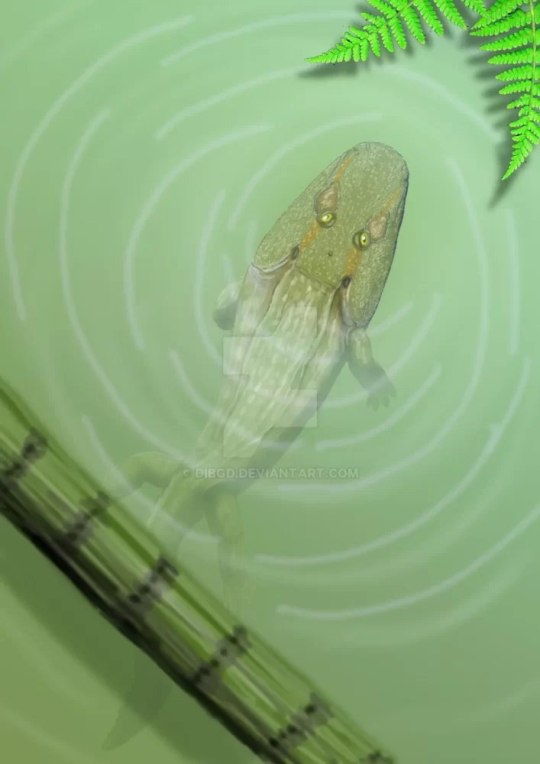
Baphetes
Baphetes — вимерлий рід тетрапод з Пеннінської кам’яновугільної групи та Парротського вугілля, Англія, формації Джоггінс у Новій Шотландії та формації Кладно в Чехії. Вперше названий Річардом Оуеном (Richard Owen) у 1854 році. Типовий вид — B. planiceps.
Повний текст на сайті "Вимерлий світ":
https://extinctworld.in.ua/baphetes/
#baphetes#tetrapod#england#scotland#great britain#czech#carboniferous#paleoart#tetrapoda#paleontology#prehistoric#animals#united kingdom#ua#палеоарт#палеонтологія#illustration#article#extinct#digital art#sciart#українська мова#україна#мова#ukraine#ukrainian#art#daily#science
15 notes
·
View notes
Text
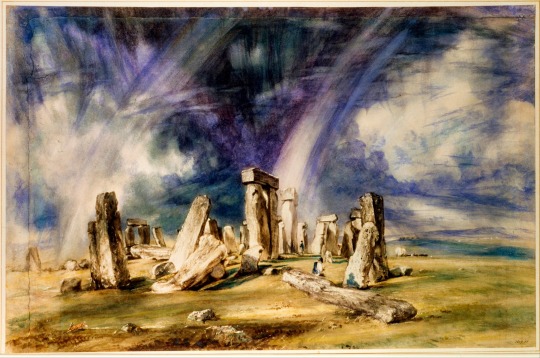
Stonehenge by John Constable
#stonehenge#art#john constable#prehistoric#monument#salisbury plain#wiltshire#england#britain#british isles#stones#neolithic#bronze age#archaeology#europe#european
86 notes
·
View notes